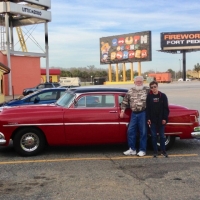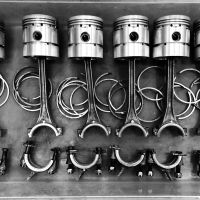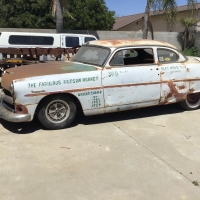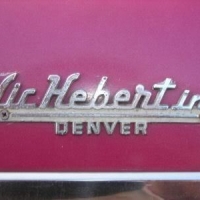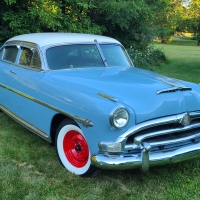Concept for multicarb Hudson intake that may be doable and affordable
If there is enough interest (Clifford had at least 15 interested, I would be willing to contact some small casting companies to see what it would take to make these. They could be sold machined or as a rough casting, but machined would definitely be better. My brother runs a machine shop if the casting company did not have that available.
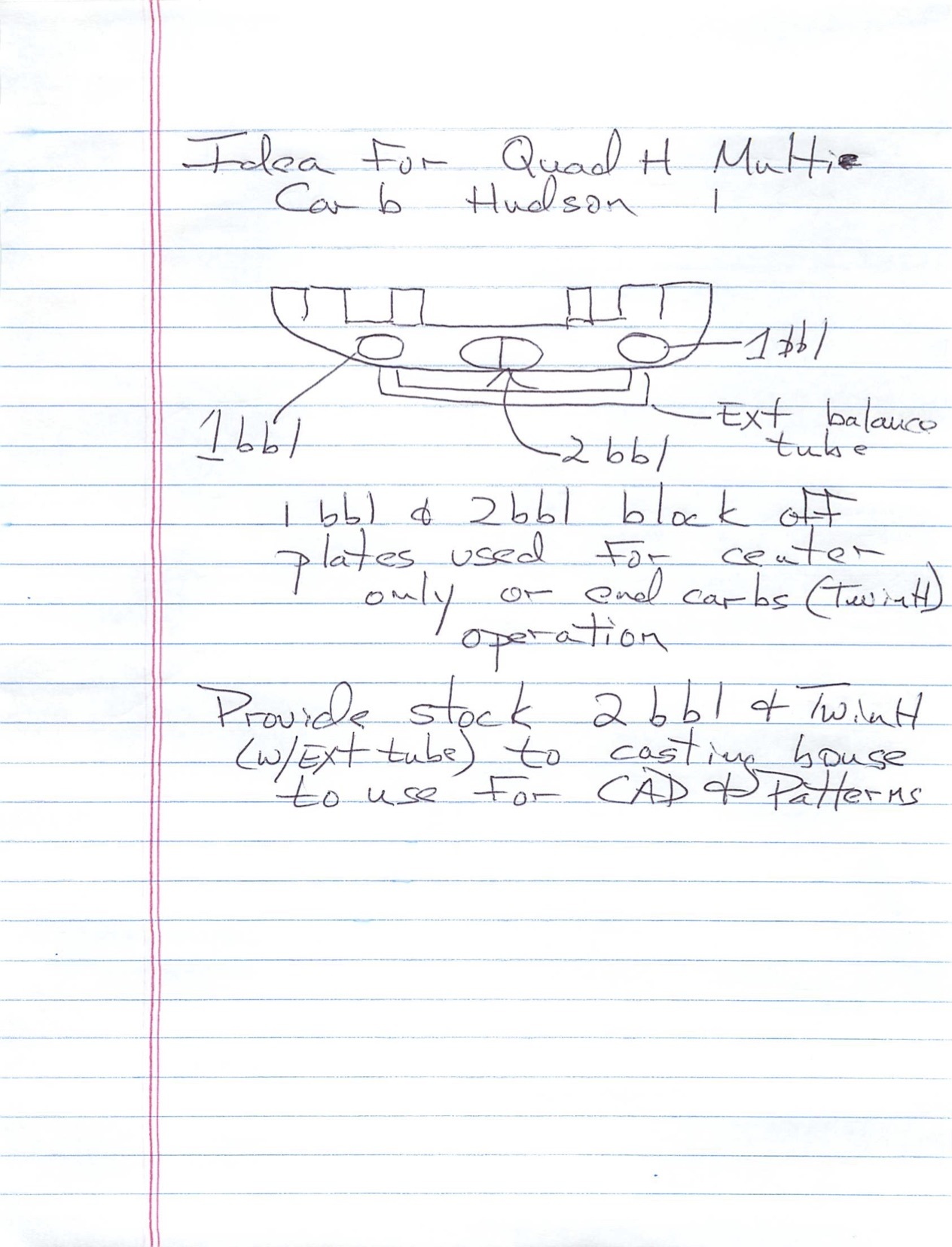
Comments
-
I do like the concept for this intake system
0 -
Dan,This may be a somewhat foolish question, but i do need to ask. Has anyone ever tried to use or create a 6 pack set up for a Hudson engine? I'm presently looking at this concept using the Vintage Speed 6 pack intake, with a Clifford intake. At this time, my concern is the clearance over the head as well as the plugs, by turning this intake sideways.Any input on either this idea or your suggested intake will help me out a great deal.Thanks Wookie0
-
I have seen some homemade log style 3 one barrel carb manifolds and some modified Edmunds aluminum manifolds with 3 x 2. I do not believe Edmunds ever made a 3 x 2, it is possible they made a 3 x 1, anyone know? The Vintage Speed adapter is interesting but you will raise the carbs quite a bit over stock, 1) an adpater to turn the 3x2 adapter 90° from its normal application on a V engine and then 2) the adapter itself, I am not sure how tall it is. You will then have the linkage sitting also up high as well. It probably will run fine but not sure what you will get. I would be surprised if it will sit under a stepdown hood. The Edmunds 2 x 2 8 cylinder manifold will not fit and my guess is that this 3 x 2 arrangement would be even taller. The other issue that you need to be careful with is that you could easily over carb the engine, even a 308. I would discuss getting a hi-pro cam from Randy Maas for sure.
The reason for my idea of a Quad H hybrid design was that stock carbs and linkage could still be used in the proper orientation and height. Anyone with a 232-262-308 could use this manifold and save themselves a lot of weight and still have a stock appearing setup (you can paint the aluminum manifold to the correct engine color), or could modify as you want.0 -
Dan, is your use of the 2 - 1bbl carbs because they would be Twin H carbs?
I would be concerned of not having 3 - 2bbl carbs. I would think having 3-2bbl carbs would provide a balanced supply across the engine cylinders.0 -
But make no mistake, I love the idea of a multiple carb set up!

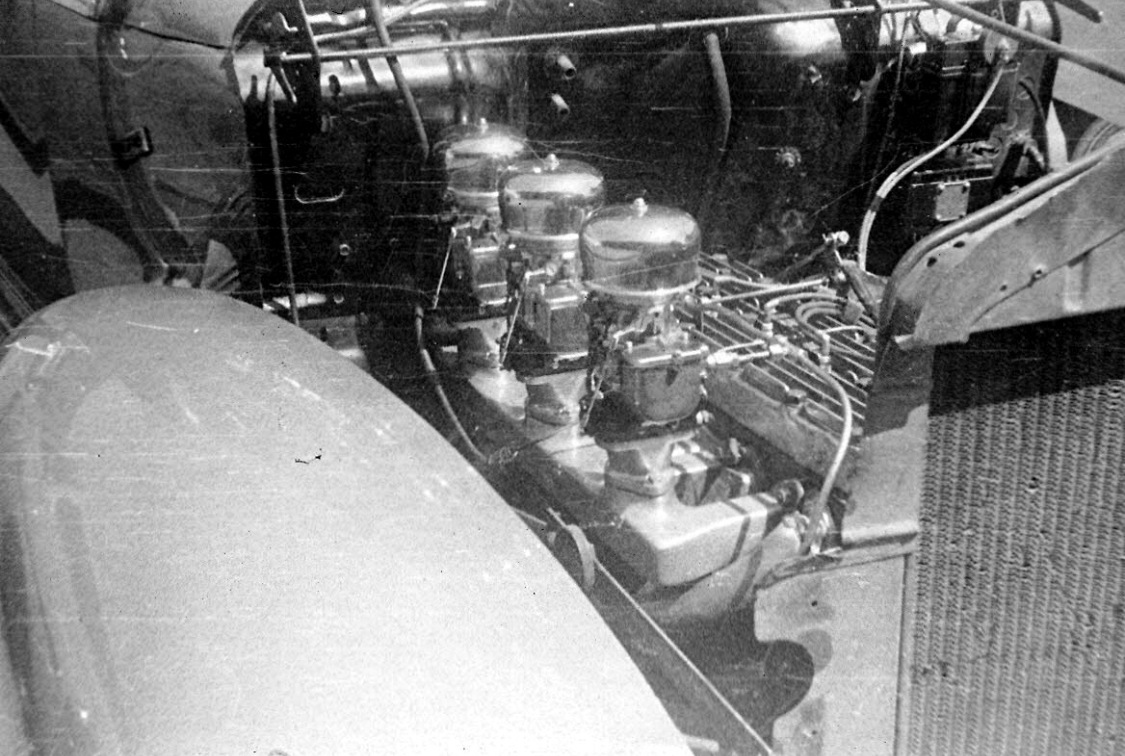
0 -
If you look at the way I laid it out - when the center 2bbl is operating by itself each barrel is feeding 3 cylinders, 3 to the left and 3 to the right. This is the way a stock 2bbl manifold would work. When you would engage the two end 1 bbl carbs you would now be feeding the front and back three with 2 barrels (1 from the 2bbl and the 1bbl). You also have an external balance tube between the front and rear 3 cylinders to keep everything in balance. Some of the manifolds had the internal and some external. My 54's twin H is internal, but to minimize casting cost it would be wise to make it external. You would need to consider the flow of each barrel of the 2bbl and the 1 bbl carbs however.
I also would think having any multi barrel carb oriented to feed the cylinders back to front important, but I am not a manifold designer. If you look at the Clifford 4bbl manifold it is oriented the proper way to feed the cylinders from side to side of the carb.0 -
That certainly is a rare 3x1 Edmunds Hudson intake!
There are still those that fuss with Inline 6s and the stobebolt crowd is certainly in that vein. In overall design an inline 6 intake is about the same in the way they work. Here is some info from Tom Langdon at Stovebolt Six:PROPER CARBURATION
The guidelines for good carburetor selection are not well understood in the aftermarket, often resulting in poor drivability especially at lower (under 40 M.P.H.) speeds. To operate well at low speeds, the physical limitations of the carburetor require it to be small for good fuel delivery at part throttle. This is in conflict with the large air flow demands of the engine in an effort to produce maximum power at higher speeds and under full load at full throttle. These are fundamental facts that are well respected among engineers who did this as a profession for the industry.
As applied to our vintage inline sixes, these basic principles help to understand that original (one barrel) size selection was to make the carburetor as large as possible while preserving good drivability and fuel economy. The compromise was (in those days) inevitably a loss in maximum power. The solution to this compromise would have been a progressive system that operates a small carburetor at low speed and then opens an additional carburetor at heavy load. Oldsmobile did this in 1949 when it introduced the four barrel carburetor for its premium V8 engine. This is the classic and most common progressive system. Unfortunately for the sixes, this was not commonly done until 1966 when Pontiac used a Quadrajet four barrel on its Over Head Cam 230 cubic inch 6 Cylinder engine.
There are other systems that employ this basic idea:
- Buick straight eight “Compound Carburetion”
- Three two barrel carburetors (with progressive linkage)
- Two four barrel carburetors (as used on early Corvettes) with progressive linkage.
- Ford Pinto four cylinder with “Holley Weber” progressive two barrel (Weber 32/36)
- Ford Escort four cylinder with Weber 32DFT progressive two barrel
Back in the 1950’s when our sixes were most popular, the aftermarket intake manifold manufacturers used the carburetors that were most expedient. Most applications used two original equipment carburetors which resulted in 100% “over carburetion” and the resulting poor drivability. By using two original carburetors, the total venturi area was so large that at part throttle low speed there was insufficient signal to draw fuel after the idle circuit stopped working. Add to that the common practice of NOT adding heat to the inlet manifold and you virtually guarantee major drivability issues.
Fast forward to today, and the typical Rochester One barrel carburetor has been rebuilt several times and violated by virtually every rebuilder. This common combination of issues guarantees an unsatisfactory product.
For those six cylinder enthusiasts who want the vintage look of a dual carburetor system, we would recommend a system of two, two barrel, progressive Weber carburetors, as used on early Ford Pinto, Chevrolet Vega and Ford Escort vehicles. We offer our new “Carter Weber’s” for this application and also triple applications where space permits. These carburetors use a very small primary venturi for good driveability and supplement it with a larger secondary to employ sufficient air flow for maximum power at higher speeds and under full load at full throttle.
Using one small carburetor is just fine if you do not mind giving up 20 or 30 horsepower. Using multiple large carburetors on straight linkage usually works fine at full throttle for racing but suffers for day to day normal street drivability. If you want both, you must use a progressive (or “staged”) system.
Tom Langdon
31 Jul 2012
Another thought would be to use two progressive Weber/Holley 2bbl on a Twin H Manifold with 2bbl to 1bbl adapters? These are about $250 a piece and you can get 32/36 or 38/38 types. You would not need to use a progressive linkage that way. They use these on the race big GMC 6s that are about 302 cu in so I would think they would work on a H308
0 -
it does not see there is any interest in a new Hudson manifold as I described. I guess the only other question would be if there is any interest in casting an aluminum Twin H style manifold with flats for machining whatever carb or throttle body mounting flange you want (this would be easy but up to the buyer to do). This would have 3 flat positions for those that might want do to 3 carbs one or two barrel designs, including Weber style 2 barrels. This would greatly reduce the overall weight of the manifold and be useable by any Hudson owner with a 232, 262, or 308. I am not going to pursue this unless there is enough interest to start the inquiry at some small casting companies.0
-
I have remained quiet on this, because I have various manifolds in my inventory that i hope to experiment with and/or use someday. I do think it is an interesting idea, and I love the idea of getting rid of the heavy iron manifold. You might consider making the center mounting pad large enough to run a single four barrel as one of the options. I have my doubts as to whether Clifford will keep producing them. I like the idea of the mounting pads that the buyer can machine to their needs or desires... I have that capability at my house... others may have to hire that service, but this will give them a platform to start with.0
-
Regarding the Weber progressive 2 barrels... I think they have the potential to be a great carb on a Hudson. I hope to experiment with them some time, with one of my long tube manifolds.0
-
The other thing is that this would also be a plus for anyone wanting to mess around with fuel injection, throttle body or port! Just to recap - the manifold would basically be identical to the one pictured but with a center boss (size to be determined 4bbl option?, and the end mounting pads to be slighly enlarged to enable 2bbl mounting. There would not be a heat riser flange in the bottom. Smaller bosses or pads could be added in the casting for vacuum ports. There could also be small bosses at the base of each runner for a port fuel injection option?
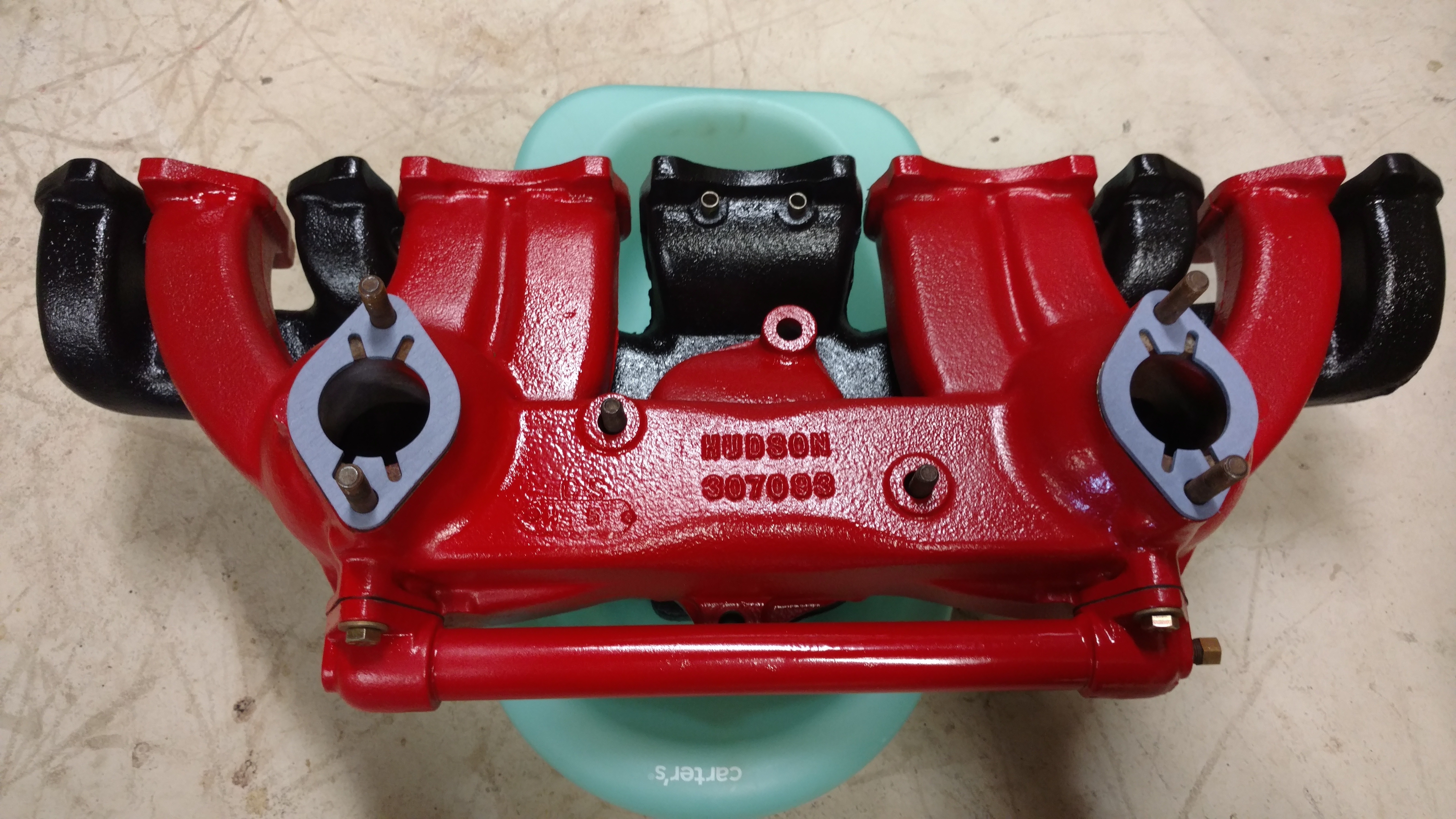
0 -
I think you might be on to something here. I think making it as EFI friendly as possible will help draw support. Will you be able to have enough clearance between the manifolds to put a block off plate on the manifold heat passage? I'm sure there will be people who may want to use the intake but may not want to buy headers.0
-
About heating the manifold, I have an Edmunds 2x2 Hudson 8 intake and it has a water pipe cast in for heating. I also have an Edmunds 2 x 1 that came with a block off plate. I would need to take a look at mine, I have headers and Twin H. I am sure some sort of block off could be used.0
-
For the block off, I would think that 3/8 gap between the manifolds would be sufficient for a 1/4' plate and a gasket to cover the hole.
The new Clifford manifolds have a water passage cast into the bottom of the manifold, but I don't think they can be used with stock exhaust manifolds. I'm in California, and I'm not sure manifold heat is necessary here. I ran an old Clifford manifold for a while without it, and didn't have any issues, and anyone running headers has no manifold heat.
I guess it would be best to have some form of heat in there if you can. Not everyone lives in a climate that is warm most of the time, like i do...0 -
I think you could design a bolt on heating pipe to the manifold. Aluminum is far far superior thermal conductor over cast iron that I don't think you will need a lot of heating to make it work well.0
-
You're probably right0
-
well maybe I a wrong about not needing any heat? Here are comments from Tom Langdon about manifold heating.
Why you need to heat your intake manifold
WHY YOU NEED TO HEAT YOUR INLET MANIFOLD
(Yes, even in California)The most frequent complaint I have is from customers who complain that since they’ve installed their multiple carbs, the engine hesitates and stumbles at low speed on normal acceleration, from a stop, even after warm-up. The most blamed culprit is the darn Rochester Carburetor. Usually it is falsely accused!
Usually while installing dual exhaust manifolds or headers, the production exhaust heat supply to the inlet manifold is eliminated because (with the exception of Edmunds Inlet Manifolds and recently Clifford intake manifolds,) there is no provision or instructions to provide heat. Why? I don’t know and could only guess. In any event heat will be required to achieve good driving response and reasonable fuel economy. Here’s why:
As liquid fuel enters the manifold from the carburetor, the vacuum vaporizes the fuel and causes a chilling effect on the walls of the manifold much like the chilling effect of spraying an aerosol on your skin. Now you have a cold manifold. If you do not supply a continuous supply of heat, the manifold will remain cold and even build frost under some conditions. At this point, if an acceleration is attempted, the vacuum will drop, fuel will no longer vaporize, and will in fact condense on the cold manifold walls until they are completely saturated with wet fuel. This takes about three seconds, during which time no fuel is going into the engine (and thus no power or an extended hesitation). After the walls are fully saturated with fuel the air flow finally picks up this ultra rich mixture and floods some of the cylinders but not all of them because liquid fuel is notoriously bad for equal distribution.
More fuel (bigger jets) will only slightly help this problem and actually worsen the over rich condition and spark plug fouling and fuel economy.
The solution: Moderate, and continuous heat supply to keep the walls of the intake manifold warm and the fuel in vapor form. Exhaust heat is fast but requires a butterfly valve in one manifold to force the exhaust flow. Water heat is slower but very clean and not corrosive to aluminum manifolds. This method utilizes the water pump to continuously supply warm water to a passage underneath the manifold. (See attached drawing.) It is sometimes necessary to weld a heat channel to the manifold, but be sure to obtain intimate contact between the coolant and the manifold wall or floor. Simply tack welding a closed wall pipe to the bottom of the manifold will not result in sufficient heat transfer.
Our heat plates are not sold with a gasket, but a gasket is definitely required. Use the gray color RTV or make a paper gasket and add gray RTV (ideal) or a factory type gasket with RTV. rev. 8/27/2013 bas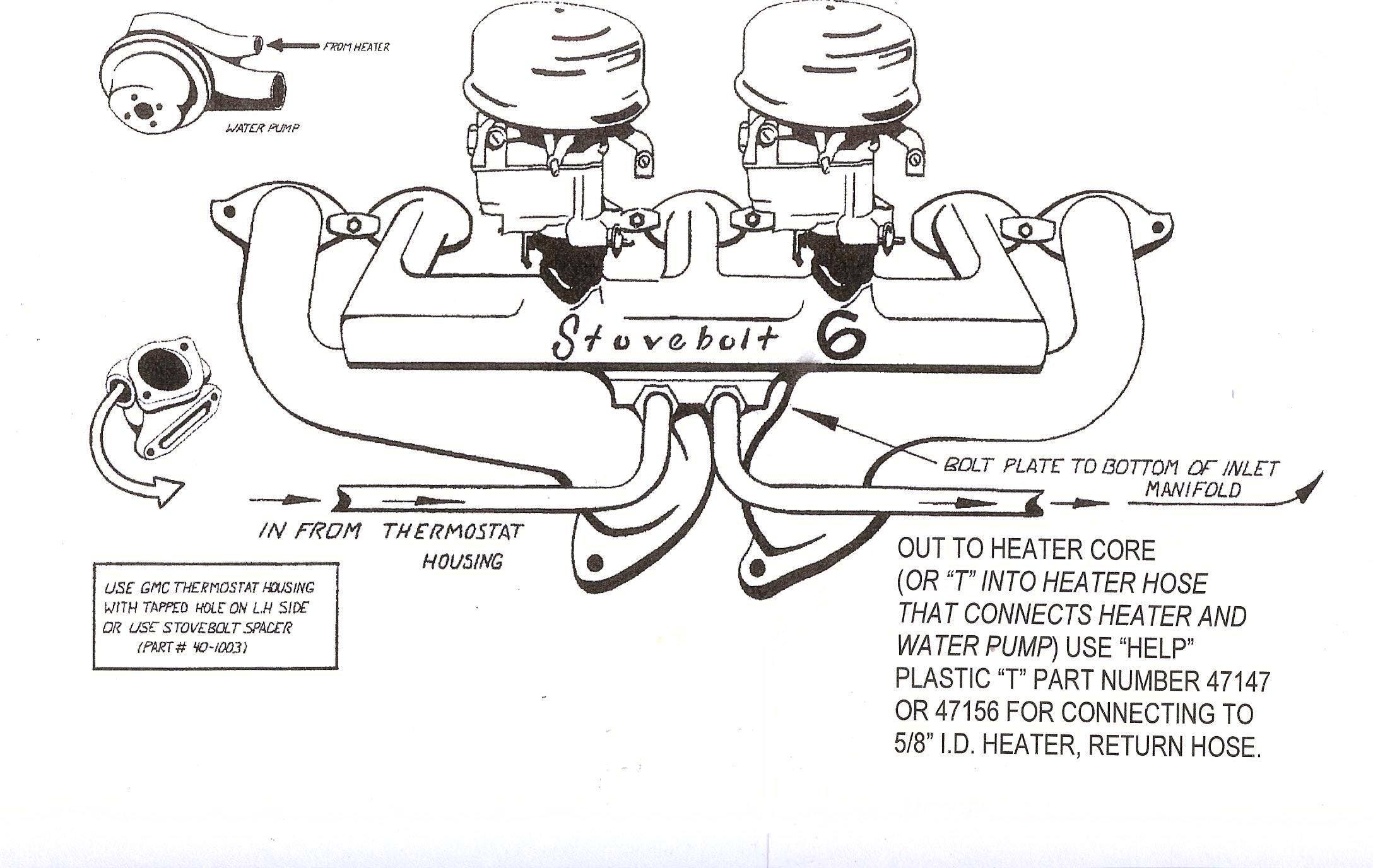 0
0 -
I've read that explanation from Langdon before. I can't say it's not true. It all sounds logical. I can only relay my own experience as stated above. I will say that the Clifford manifold I'm using now has a water passage cast into it, and I'm using it. If it is something that can be made as part of the casting, I think it is a good idea to include it.
0 -
It's a good option to include. I'd never run a manifold without heat in my area. I've tried before and it made the vehicle nearly undrivable even in 70-80f temps.0
-
I run the twin H with the old style clifford long tube headers on my Super Wasp. I have seen icing on the carbs in the 40 degree range even with the heat tubes running from the headers to the bottom of the intake.0
-
I think most are ok with some manifold heating but if it’s got pipes or hoses running around & looks ugly, I’d never have any interest in the item. If it’s clean looking I’d be interested. Functionality is important but looking good is equally important if not more so.On my 1937 212ci engine I completely removed the flapper plate on the inside of the exhaust manifold which is closed at cold start up & was rusted closed. Since removing it I’ve had absolutely no problem with the engine running even in 40 degree temps. Granted, exhaust air can still get into the area around the intake to heat it but it’s not forced in there anymore.0
-
I have twin H on my 54 w/ Clifford headers and even in the winter I have not really had any issues with it running.0
-
Here are some photos of Bill Hamilton's Twin H FI on a 262. This is from 2016.

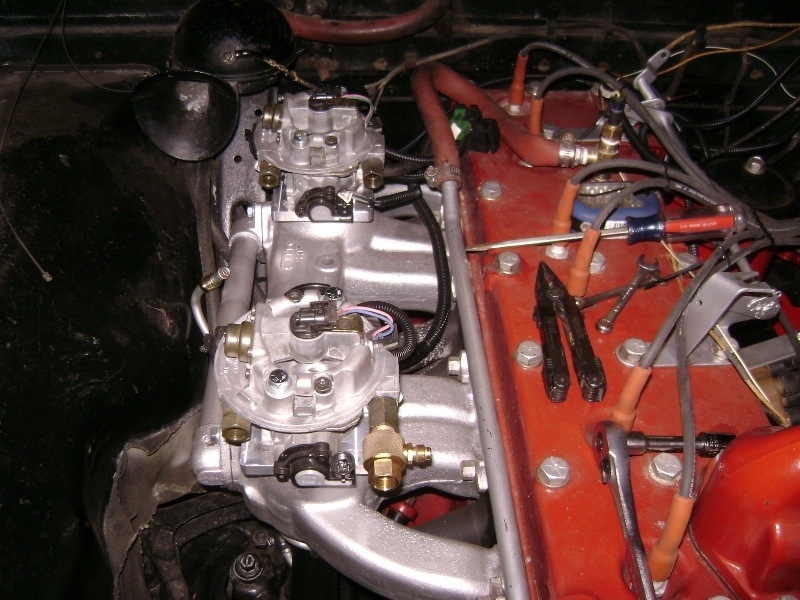
0 -
0
-
0 -

0 -
Kerry that looks cool although your last two post do not show up. Do you have any performance information?0
-
What TBI does that system use? Looks like a single injector and a custom TB.0
-
Bill makes these on a custom basis: http://hamiltonfuelinjection.com
Kerry I believe this was two single body TB units on the Hudson manifold. Bill has a Hudson also and this came from his work in it.0 -
0
Categories
- 36.9K All Categories
- 112 Hudson 1916 - 1929
- 20 Upcoming Events
- 92 Essex Super 6
- 28.6K HUDSON
- 571 "How To" - Skills, mechanical and other wise
- 995 Street Rods
- 151 American Motors
- 178 The Flathead Forum
- 49 Manuals, etc,.
- 78 Hudson 8
- 44 FORUM - Instructions and Tips on using the forum
- 2.8K CLASSIFIEDS
- 608 Vehicles
- 2.1K Parts & Pieces
- 77 Literature & Memorabilia
- Hudson 1916 - 1929 Yahoo Groups Archived Photos
